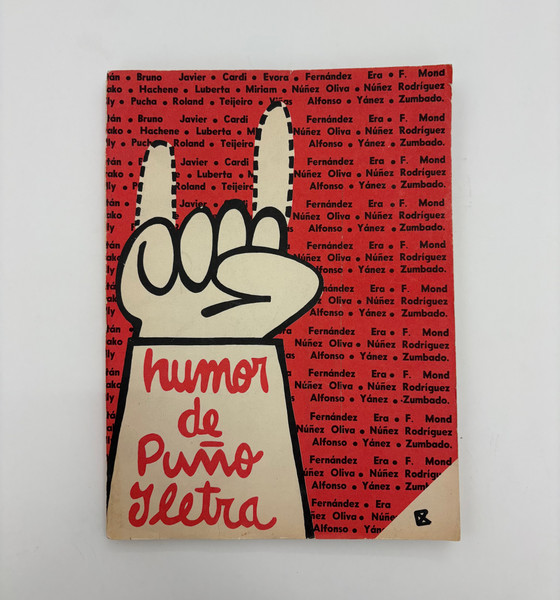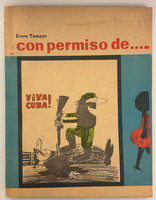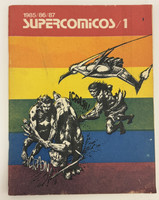- Travel
-
Exhibits
- La Portada Cubana
- Immortal Cuba: Artists Take on Their Heroes
- Seattle Poster Exhibit
- Sandra Dooley & Alejandrina Cué
- The Art of Wayacón
- Cuban Folk Art
- Cuba In Black And White
- 25 Years of Cuban Art Space
- Summer Folk Art Expo
- ¡SPRING AWAKENING FROM CUBA!
- Celebrating The Art Of Cuban Women
- Celebrating Paper, Affordable Art from Cuba
- Art of the Revolution
- Outsider Art
- Lost and Found
- En la lucha: Celebrating Cuban Women and Their Art
- Cuban Art Stash
- 100 Fires: 5 Cienfuegos Artists' Work on Paper
- Waya + Monte! Magic Realism in Cienfuegos
- Viva Cuba Viva! Poster Show
- Cultivando Sueños
- Black Lives Matter in Cuba Jan 9-March 27
- Leandro Soto: Crónicas visuales
- Cuban Canvas
-
Archive
- Global Reflection 2018: Spirit and Community
- Exhibit in the cloud: Contemporary Works on Paper
- MADE IN CUBA! MINNEAPOLIS EXHIBIT
- Cuban Posters and Photography from CCS collection
- AUTUMN SALE! Sept/Oct 2017
- SPRING ARTS AND CRAFT SALE
- Vuelo Directo/Non Stop: Alberto & Alejandro Lescay
- The Many Faces of Fidel
- Somos
- Made in Cuba!
- The US empire in Cuban graphics
- Made in Cuba/Seattle exhibit
- Entre Nos
- Looking Back
- Cuban Art Space
- Membership/Donate
- About Us
- Cuba News
-
Humor de Puño y Letra is a collection of humorous writings compiled by Juan M. González González and published by Editorial Pablo de la Torriente in 1989. The anthology brings together works from multiple Cuban humorists and satirists including Betán, Bruno Javier Machado, Cardi, Évora, F. Mond, Jorge Fernández Era, and Grako, showcasing the vibrant tradition of revolutionary humor and social commentary in Cuban letters.
Cover designer Rosa Ma. Carriquiri creates a striking graphic design that embodies both the strength and playfulness of Cuban humor. A bold cream-colored raised fist dominates the composition against a vivid red background, with the title "humor de Puño y Letra" (Humor of Fist and Letter) written in flowing red script across the fist's palm. The wordplay in the title is particularly clever—"de puño y letra" literally means "in one's own handwriting" but here combines the revolutionary symbol of the raised fist (puño) with personal expression (letra/letter), suggesting humor as both a weapon and an intimate form of communication.
The background features the names of all contributing writers repeated in rows—Betán, Bruno Javier, Cardi, Évora, Fernández Era, F. Mond, Hachene, Luberta, Miriam, Núñez Oliva, Núñez Rodríguez, Pucho, Roland, Teijeiro, Alfonso, Yánez, Zumbado—creating a typographic texture that emphasizes the collective nature of this project. The partial silhouettes of the skyline or buildings peek through behind the fist, suggesting urban life and the everyday experiences that fuel satirical writing.
The introduction "Antes de que se lance a leer" (Before you start reading) explains that this is an affectionate and regular compilation of humorists published by Editorial Pablo de la Torriente, featuring an anthology of 90 works across ten centuries of humor. The editorial note emphasizes that while the book contains satire and humor, it maintains respect and doesn't intend to offend any individual.
Named after Pablo de la Torriente Brau, a revolutionary journalist and writer who died fighting in the Spanish Civil War, the publishing house specialized in humor, journalism, and testimonial literature. This anthology reflects the important role of satire in revolutionary Cuba—where humor served both as entertainment and social critique, allowing writers to address contradictions and everyday frustrations while remaining within acceptable political bounds. The raised fist symbol links this humor tradition directly to revolutionary consciousness, suggesting laughter itself as a form of resistance and solidarity.
-
-
Discover More at the Center for Cuban Studies







